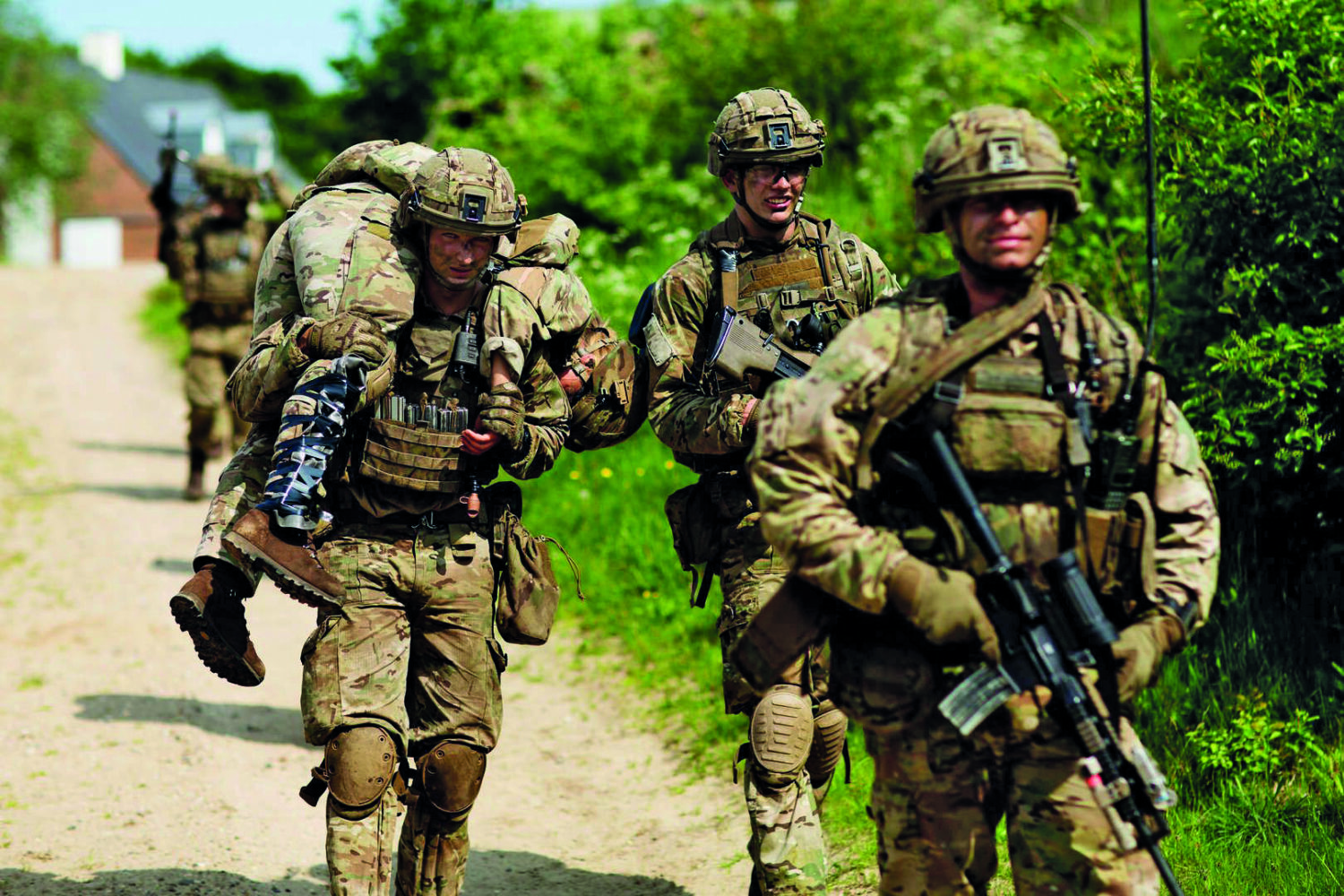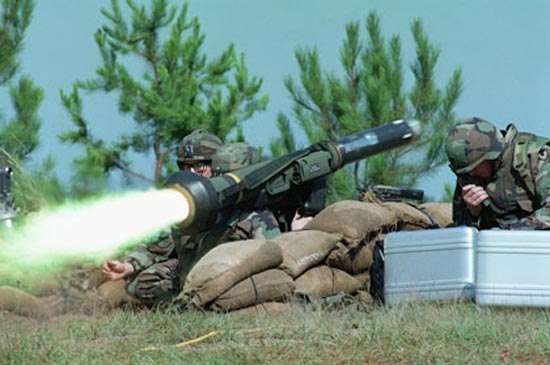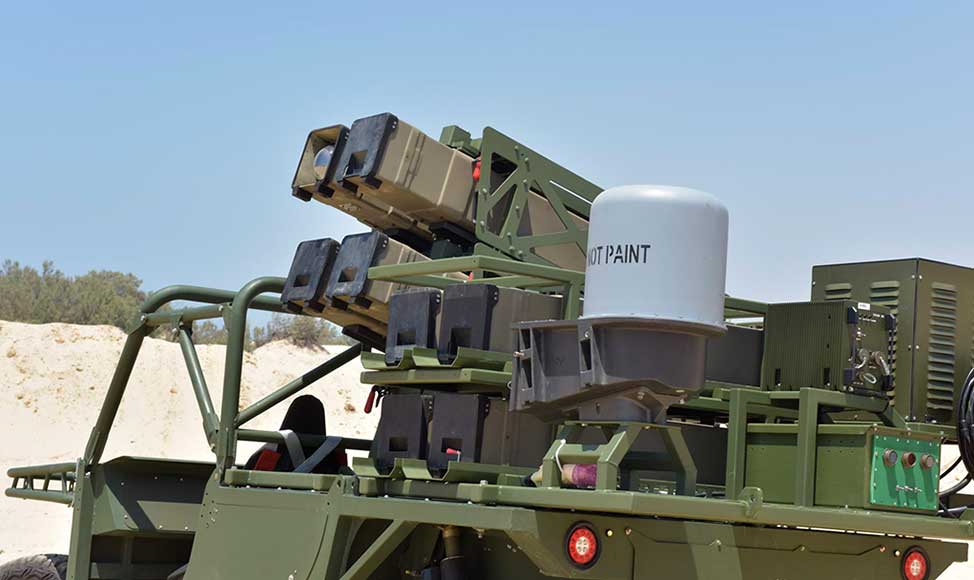Colin Parkinson
Army.ca Myth
- Reaction score
- 9,141
- Points
- 1,160
Light AT mixed with recce and flank security would be good roles for the Armoured Reserve.


 euro-sd.com
euro-sd.com
If you’ve sighted your TOW properly it’s should be like 1 k back and to the flank. Direct fire shouldn’t be a huge worry and by doctrine it should relocate rapidly after the first round. Can do that in a g ride easy enough. Let me add it’s not the ideal option, it’s just what we have in the cupboard right now.Mounting the support weapons and their ammo on the vehicles that have to be left behind once the bullets and bombs start flying wouldn't be my first choice, If there’s a shortage of armoured vehicles, I’d prefer to mount the riflemen (with their e-tools!) in the trucks, and put the support weapons under armour.
While I agree that is ideal - based on my experience with US Armor moving in Iraq in the cities - and what I have seen of Russian and Chinese formations - I don't think you are going to get a symetrical battlespace to work in and the DS answer won't work.If you’ve sighted your TOW properly it’s should be like 1 k back and to the flank. Direct fire shouldn’t be a huge worry and by doctrine it should relocate rapidly after the first round. Can do that in a g ride easy enough. Let me add it’s not the ideal option, it’s just what we have in the cupboard right now.
I rather cynically thing that it could be Force 3025 and the Army still wouldn't have the time...It’s absolutely past it’s prime. No question. But this is a thread about Force 2025 which is built around limited investment and no real substantial changes. It’s what can we fix in four years.
The only thing that concerns me is the Israeli "over marketing" with the range spec of the NLOS - they claim 25kmIn an ideal world I’d see us with Spike in its various forms with NLOS at Brigade level, but hey that’s not a 4 year fix (in this army).
The Javelin provides dismounted Infantrymen a surefire way to effectively kill tanks. The system’s portability makes it the anti-armor weapon of choice for light early entry forces. It has an extremely high probability kill rate against enemy armor and is effective out to 2,500 meters.3
First used in combat during the invasion of Iraq in 2003, the Javelin was effective at destroying T-72 and Type 69 tanks. In one engagement, a Special Forces Operational Detachment-Alpha (ODA) destroyed two T-55 tanks, eight armored personnel carriers, and four troop trucks with the Javelin.4
Using the eight-step training model, we developed a four-day program of instruction (POI) to teach designated battalion personnel how to employ and operate the Javelin prior to the NTC rotation. We utilized a four-man team of NCOs who had graduated from the Heavy Weapons Leader Course at Fort Benning as instructors.....Four designated instructors were able to train 40 Javelin operators during the course, providing each company (including our Headquarters and Headquarters Company) the ability to employ Javelins at NTC. The anti-armor POI gave designated Javelin operators eight hours of hands-on training time.
Use of the Javelin at NTC 14-03
The employment of the M98A2 using the FTT proved to be a critical asset for the battalion during the force-on-force scenario of NTC rotation 14-03. The FTT is a fully integrated, three-dimensional force-on-force training device consisting of a simulated round, a battery charger, and batteries. The round incorporates a MILES laser transmitter to allow simulated Javelin engagements during training exercises. The FTT is designed to simulate the Javelin’s operational and engagement parameters. The battalion was able to destroy enemy mechanized elements at distances of 1,500-2,000 meters away from positions of dominant terrain with a clear line of sight. Trained Soldiers were able to achieve a 50-percent kill ratio on enemy armored vehicles in both offensive and defensive operations. While 50 percent is low, it was in real-world battlefield conditions with Infantrymen climbing up significant terrain to achieve effects against enemy armor.
The key to the employment of the M98A2 was the use of movement and maneuver of the Stryker vehicles and the dismounted Infantry. NTC’s vast open terrain allowed for the employment of weapon systems at their maximum effective ranges. This required a “push and pull” technique between dismounted and mounted Infantry Soldiers. The Stryker platoons would dismount Infantry squads and “push” them forward, utilizing the Strykers’ remote weapon systems to cover their movement. The dismounted squads seized dominate terrain, established hasty support-by-fire positions using Javelins, and provided overwatch for the Strykers as they “pulled” forward. The “push and pull” technique allowed the battalion to defeat enemy armor by maneuvering the dismounted Infantry with Javelins to positions of advantage and overwatch the movement of vehicles as they bounded forward. This technique requires a thorough terrain analysis by the battalion staff during the military decision-making process and the company leadership during troop leading procedures in order to maximize the usage of the terrain available.
During Battle Period 4 of NTC 14-03, we found ourselves attacking into an enemy armored formation defending key terrain in vicinity of the Arrowhead and Alpha/Bravo Pass. We had to maneuver to Refrigerator Gap and conduct a breach of enemy obstacles to pass elements of the brigade onto their objective. The terrain was not the most suitable place to maneuver Strykers as it was restrictive or severely restrictive in nature. Based on the posture of the enemy, we recognized we would have to employ the “push and pull” technique described above. Our rifle companies deliberately cleared mountainous terrain dismounted en-route to their objective and only moved vehicles forward once overwatch positions with Javelins were established. While this technique took extended time to execute, it enabled our battalion to destroy 10 armored vehicles before reaching our objective.

- Weight: 204 lbs (92.5 kg) (empty M220 launcher with TOW 2 mods and AN/TAS-4A fitted) + 52.8 lbs (23.9 kg) for TOW-2 FCS module with inserted battery pack (21 lbs (9.5 kg) for separate BPS with power conditioner) and ~ 60 lbs (27.2 kg) for missile
Spike-MR[edit]
The medium range version (Israeli designation: NT-Gil). The weight of the missile is 14 kg (30 lb 14 oz), its minimum range is 200 m, while its maximum range is 2,500 m (1.6 mi). It is used by infantry and special forces.[15]
Spike-LR[edit]
Long range version (Israeli designation: NT-Spike). The weight of the missile is 14 kg (30 lb 14 oz), and the weight of the complete system is less than 45 kg (99 lb 3 oz).[16] Maximum range is 4,000 m (2.5 mi) and it is used by infantry and light combat vehicles. It adds fiber-optic communication to and from the operator during flight.[17] Reported armour penetration capability is more than 700 mm (28 in) of Rolled homogeneous armour (RHA).[18] It is also deployed by Sentry Tech remotely controlled weapons stations along the Gaza border.[19] In early 2014, Rafael revealed they had increased the range of the Spike-LR to 5 km (3.1 mi), enhancing versatility on existing firing platforms and allowing it to be utilized on new ones like light helicopters.[20]
Spike-LR II[edit]
Spike LR 2
A new generation of the original Spike-LR is in full-scale development and scheduled to be operational by the end of 2018. Spike-LR II (Israeli designation: Gil-2, גיל 2) has reduced weight to 12.7 kg (28 lb), increased range of 5.5 km (3.4 mi) at ground level and 10 km (6.2 mi) from helicopters using an RF data-link, warhead options of tandem HEAT with 30% increased armor penetration or a multipurpose blast warhead with selectable impact or penetration detonation fusing, a new seeker that includes an uncooled IR sensor with a smart target tracker with artificial intelligence features, the ability to fire on grid target coordinates using an inertial measurement unit for third party-target allocation, and is compatible with legacy launchers. The missile is designed with a counter-active protection system (CAPS) capability, being able to hit targets at higher impact angles of up to 70 degrees.[21][22] First ordered by the IDF in October 2017.[23]

It was ironically 1 dude with the Javelin who caused the mayhem - yes the book value for a SODA is 12, but I've seen deployed teams of 10-15.I'm sure there are those here that can correct but I understand an SF-ODA is a team of 12 highly experienced soldiers.
2x T55
8x APC
4x Trucks
Doesn't sound like a bad day's work for a dozen soldiers. Even if you are talking ancient T55s.
The NLOS is a fair bit heavier and needs some more asset coordination to make it work from my understanding.Are we getting it wrong thinking that 20-30 km range makes the N-LOS a Brigade Asset?
If the Squad/Section is receiving AT and AD missiles with 5 km ranges and 40mm UAVs with 10 km ranges then isn't 20-30 km a Bn range weapon?
I still have my Robin Hood hat from 40 years ago complete as per EIS with a gunner cap badge.Wow! Check out the awesome Rouleau-RollTM on the driver and CC's boonie caps!
An ODA is established for a captain with a warrant officer 1 or 2 (the US type) an ops master sergeant, an ops/int sergeant first class and eight sergeants first class/sergeants with specialties in weapons, engineering, medical and communications (two of each). As KevinB points out, that's the establishment but teams are frequently short folks or are augmented such as by a SOT-A (Special Operations Team - Alpha) which are SIGINT specialistsI'm sure there are those here that can correct but I understand an SF-ODA is a team of 12 highly experienced soldiers.
It's not hard to understand at all - lack of arty --> $$$; lack of air defence --> $$$; lack of anti-armour --> $$$. $$$ is a matter of priorities. What will we fund? and each of the listed items was low on the priority list. I've said it before: If the Taliban would have used tanks and aircraft we'd have anti-armour and air defence today - maybe only bought on a UOR but still.e-Warriors or not I still find it hard to understand that these aren't already in all our infantry battalions arms lockers. Along side the Carl Gustafs.
It's not hard to understand at all - lack of arty --> $$$; lack of air defence --> $$$; lack of anti-armour --> $$$. $$$ is a matter of priorities. What will we fund? and each of the listed items was low on the priority list. I've said it before: If the Taliban would have used tanks and aircraft we'd have anti-armour and air defence today - maybe only bought on a UOR but still.

Oooohhhhh…. TNG Picard reference?Before the walls fell Shaka!.
I like where some of this is heading.Looking a bit more at the numbers comparison between our current Infantry structure and the Swedish Mechanized Infantry structure you get some interesting numbers.
Looking a bit more at the numbers comparison between our current Infantry structure and the Swedish Mechanized Infantry structure you get some interesting numbers.
Just looking at the line Infantry Platoon structure, currently each Infantry Platoon is 40 x troops (3 x 10-man Sections and a 10-man Command Element plus Weapons Detachment) with the Mechanized Infantry Platoons each having 4 x LAVs.
Current Structure:
3 x symmetrical Brigades each with:
2 x LAV Battalions (18 x Mech Platoons = 72 x LAVs and 720 x Troops)
1 x Light Battalion (9 x Light Platoons = 360 x Troops)
That gives us a total of 216 x LAVs and 3,240 x Troops in our line Infantry Platoons.
By comparison, using the Swedish model, each Mechanized Platoon would have 29 x Troops riding 3 x LAVs
So using a Swedish Platoon model, if you were to have one Heavy Brigade consisting of 3 x combined arms Battalions (18 x Mech Infantry Platoons) and two fully Mechanized Infantry Battalions (each with 27 x Mech Infantry Platoons) you'd end up with a total of 72 x Swedish-style Mech Platoons.
That would give us a total of 216 x LAVs and 2,088 x Troops.
Same total number of LAVs, but a savings of 1,152 Infantry PYs. And this is just the savings from the line Infantry Platoons. I haven't considered any savings from differences in the CS Company, etc. numbers between the two models.
This would allow us to have an all-Mechanized Infantry force with PYs to spare. Those numbers could be used to either bring our Force Generation numbers up closer to the unit Establishment numbers, or we could even stand up an additional dedicated Light Battalion in addition to our existing units.

